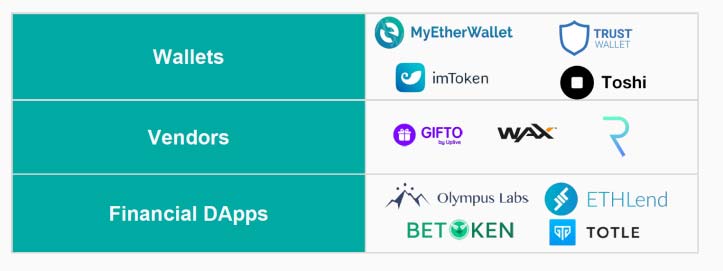Are Decentralized Exchanges part of the Bottom-up decentralized monetary policy?
It was 2 days before Christmas that Lykke publicly announced it had to switch to a centralized operational model! Up to then, Lykke could claim to have been the only exchange that was semi-decentralized and charging no commissions to its users. Think of a Robinhood for all fiat foreign exchange pairs plus cross pairs with BTC and ETH; with every user storing their own private keys and Lykke using a multi-signature process for storing client funds. So, if Lykke’s key is stolen, each and every private key would need to hacked to get to the funds. Seems wonderland, doesn’t it? Commission free with the security of decentralized settlement. The only centralized piece was the matching engine that Lykke uses to execute the trades.
This past winter not only brought more snow to Switzerland but also made the blockchain scalability issues show their ugly face and force Lykke to switch to a centralized operational mode, as blockchains became slow and very expensive! “Let’s talk numbers: since Lykke Exchange was launched in June 2016, we’ve seen Bitcoin transaction fees increase by more than 24,000%. In first three weeks of December 2017 alone, Lykke has paid more 45 BTC (around USD 740,000) in fees for offchain settlement channels.” Lykke Changes Operational Mode
Decentralized exchanges (DEXs) have not taken off yet, for several technical reasons around scalability and security. And for the other simple reason, that centralized exchanges (like Coinbase and Binance) can grow so much faster so why bother. Lower hanging fruit always has priority.
#AndTheIronyIs[1] is that several crypto businesses that are scaling fast, as the demand and the supply of digital assets has grown over the past year, are focusing on establishing ties with the conventional system as if they were some Fintech looking for distribution channels, low customer acquisition cost, and offering financial services using somebody else’s license.
Since evidently, so-called professional investors, like financial institutions, asset managers, hedge fund managers, endowments etc and the so-called whales, are not begging for fully decentralized services; why bother to fund such true DEXs?
At last week’s 2-day Crypto Valley conference, the first one that had a full academic track and a focus on research and innovation, there were several 30min presentations from blockchain startups that belong to the Web 3.0 generation. The Lucerne University of Applied Sciences was the facilitator and the IEEE computer society involvement made the event a global bestseller.
Kyber Network was one of them and their CEO and founder Loi Luu gave us a great overview of the DEX space. Evidently, the eye-catcher damaging the reputation of centralized exchanges, are the continuous hacks. However, we must never forget that None of these losses have been socialized, from Mt. Gox to the $530million worth of Coincheck in January 2018.
Some of the DEX ventures that have launched already are:
As most of the insights are out of the talk that the CEO and co-founder of Kyber Network, Loi Luu, gave at the first 2day IEEE of CryptoValley conference last week, I will refer to them in a little more detail (albeit last in the list above).
It became clear to me while listening to Loi Luu, that the devil is in the details, so every time we use the term DEX, we should understand the differentiations and the “degree” of decentralization.
The factors that are relevant are:
- The user on-boarding requirements
- The custody of funds
- The order matching
- The settlement
- The liquidity
- The clients/users
IDEX is an example of a partially decentralized exchange because it takes custody of funds and there is settlement risk with IDEX and order matching through IDEX, however it requires No registration.
0X and EtherDelta are hybrid DEXs because they also require No registration, take No custody of funds, the settlement is on-chain, and order matching is through EtherDelta for EtherDelta, and 0X uses an ecosystem of Relayers (DDEx, Ethfinex, Radar, and Paradex). Relayers in simple words, are facilitators for the order book and allow the trade to happen in an 0x smart contract while you remain in control of your private keys (read more here). This latter part makes 0X a hybrid model.
Airswap, is a hybrid P2P DEX, because it has the same characteristics as 0X except it targets P2P users and the order matching is via done via an Indexer (more here).
Liquidity in these DEXs varies. It is high in the P2P DEXs and not so stable in the others.
Kyber Network has a different focus altogether. They want to take on the role of a decentralized liquidity newtork and target not only individual users but also vendors that currently, only accept very few main cryptos. Kyber Network wants to make token swaps an invisible transaction for everybody, be it a wallet, a payment provider, a fund manager, a Dapp, or a DEX. Loi Luu used the example of a OMG token holder that wants to shop from a vendor that accepts ETH only. Kyber Network works with the vendor so that all customers can pay with any token they like, no extra cost, no extra information needed from the client. Same with an app that accepts BTC but client wants to pay with any other token he or she holds.
Melonport, the protocol for fund management of digital assets, that operates with the Melon token, can use the Kyber Network so that fund managers on the Melonport protocol can liquidate and rebalance the portfolio seamlessly. Kyber Network is the liquidity provider that enables instant token swaps within a wallet, multiple token acceptance for vendors, acts as a market maker to financial dDapps, and increases token usage.
Kyber Network ICO’d last September and has already traction.

[1] #AndTheIronyIs is my own Twitter tag, that of course anyone can use anytime, for any kind of incident where the disruptors are choosing to be retrofitted to the status quo.
I started using this tag line during my long talk at #CryptoMountainsRocks in March at Davos, on a “Wall Street perspective of crypto as an alternative asset class”.
It was such a hit, that I decided to keep thinking along those lines.


